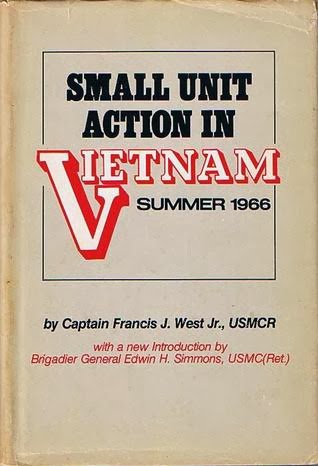So after some months of painting and planning we had our test run of RAFM's
Charlie Company rules. We had a good time and I was happy with the rules.
Initially I had liked these rules for a number of reasons. For one, they are designed to take into account the fact that free world forces rarely saw their opponents. Opposition forces in
Charlie Company are identified by muzzle flashes and the miniatures may never appear on the table. Further, I like the fact that opposition forces are run by the game master. The Viet Nam conflict is marked by free world forces searching for targets or being attacked in static bases. If a human player is in charge of NVA or VC units there is really no reason for that player to ever end up in a less than ideal encounter.
I did have some concerns with the rule system. They are based on one player running a squad or platoon. There is some question about the depth of decision making a squad leader would be expected to make. A platoon leader might have more autonomy but it seems like the company is a good level to control in this theater. I also wondered how well the rules would portray the war itself- would they just simulate a postwar/modern battle or would they carry period flavour?
For the purposes of the game I ran two historical encounters. The first was from
Small Unit Action in Viet Nam: Summer, 1966, the chapter called Mines and Men. The second scenario was based on Three Companies at Dak To, from
Seven Firefights in Vietnam. This is also available
online. The former involves three squads and some armor fending off a weak ambush by Viet Cong. I was hoping to use it to teach basic rules and give the players a sense of the game. The Three Companies game involves a platoon stumbling into an aggressive company of NVA regulars. This was designed to illustrate the value of a quick withdrawal followed by lots of air and artillery support.

Preparing for the games was very satisfying. It's very striking that we engaged in a huge undertaking not too long
ago, one with a terrible human and financial cost, and one that changed
our country dramatically, and that it's largely forgotten today. People
remember The Doors, a band with maybe two good albums to their name,
but they're forgotten a ten year war that had mammoth ramifications,
both on a macro and a micro scale. The emotional impetus to forget the conflict makes sense, but the success in execution is amazing. And the price paid by vets and by future generations who repeat the war's mistakes is far too high. For the Dak To scenario I was able to find military maps of the area and view it on Google Satellite. There are veterans around us today who fought and sacrificed in those forests (veterans of two sides I might add) and I can say "yeah, I know you did that, I know when, and I know where. That experience isn't forgotten. It's not been erased."
Next- the game and after action.


 The second game demonstrated some of the difficulties with Viet Nam gaming. The players were tracing a trail up the Ngok Kom Leat range prior to the battles at Dak To. In the scenario the second platoon stumbles into a NVA company and has to pull back in an organized fashion and call in artillery and air support. None of the players had that reflex to pull back and drop supporting fire and so I had to step in and suggest that this might be second nature to soldiers in 1967. The players felt that if their mission was to follow a trail then they should absolutely follow it even as bullets begin to fly. It's striking and reminds one that skills learned in Napoleonic and Second World War gaming may not apply here. They players reluctantly pulled back, weathered two human wave attacks, and then sat back as Company B at hill 823 took the worst of it.
The second game demonstrated some of the difficulties with Viet Nam gaming. The players were tracing a trail up the Ngok Kom Leat range prior to the battles at Dak To. In the scenario the second platoon stumbles into a NVA company and has to pull back in an organized fashion and call in artillery and air support. None of the players had that reflex to pull back and drop supporting fire and so I had to step in and suggest that this might be second nature to soldiers in 1967. The players felt that if their mission was to follow a trail then they should absolutely follow it even as bullets begin to fly. It's striking and reminds one that skills learned in Napoleonic and Second World War gaming may not apply here. They players reluctantly pulled back, weathered two human wave attacks, and then sat back as Company B at hill 823 took the worst of it.







